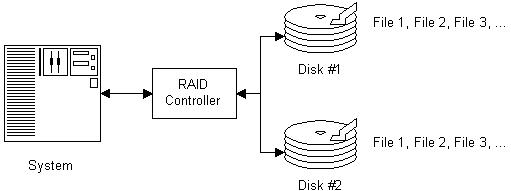What data recovery tools to buy if you want to start a data recovery business?
Free video data recovery training on how to recover lost data from different hard drives?
Where to buy head and platter replacement tools at good prices?
Data recover case studies step by step guide
I want to attend professional data recovery training courses
Mirroring is one of the two data redundancy techniques used in RAID (the other being parity). In a RAID system using mirroring, all data in the system is written simultaneously to two hard disks instead of one; thus the “mirror” concept. The principle behind mirroring is that this 100% data redundancy provides full protection against the failure of either of the disks containing the duplicated data. Mirroring setups always require an even number of drives for obvious reasons.
The chief advantage of mirroring is that it provides not only complete redundancy of data, but also reasonably fast recovery from a disk failure. Since all the data is on the second drive, it is ready to use if the first one fails. Mirroring also improves some forms of read performance (though it actually hurts write performance.) The chief disadvantage of RAID 1 is expense: that data duplication means half the space in the RAID is “wasted” so you must buy twice the capacity that you want to end up with in the array. Performance is also not as good as some RAID levels.
Block diagram of a RAID mirroring configuration. The RAID controller
duplicates the same information onto each of two hard disks. Note that
the RAID controller is represented as a “logical black box” since its functions
can be implemented in software, or several different types of hardware
(integrated controller, bus-based add-in card, stand-alone RAID hardware.)
Mirroring is used in RAID 1, as well as multiple-level RAID involving RAID 1 (RAID 01 or RAID 10). It is related in concept to duplexing. Very high-end mirroring solutions even include such fancy technologies as remote mirroring, where data is configured in a RAID 1 array with the pairs split between physical locations to protect against physical disaster! You won’t typically find support for anything that fancy in a PC RAID card.
Data recovery Salon welcomes your comments and share with us your ideas, suggestions and experience. Data recovery salon is dedicated in sharing the most useful data recovery information with our users and only if you are good at data recovery or related knowledge, please kindly drop us an email and we will publish your article here. We need to make data recovery Salon to be the most professional and free data recovery E-book online.








Comments are closed
Sorry, but you cannot leave a comment for this post.